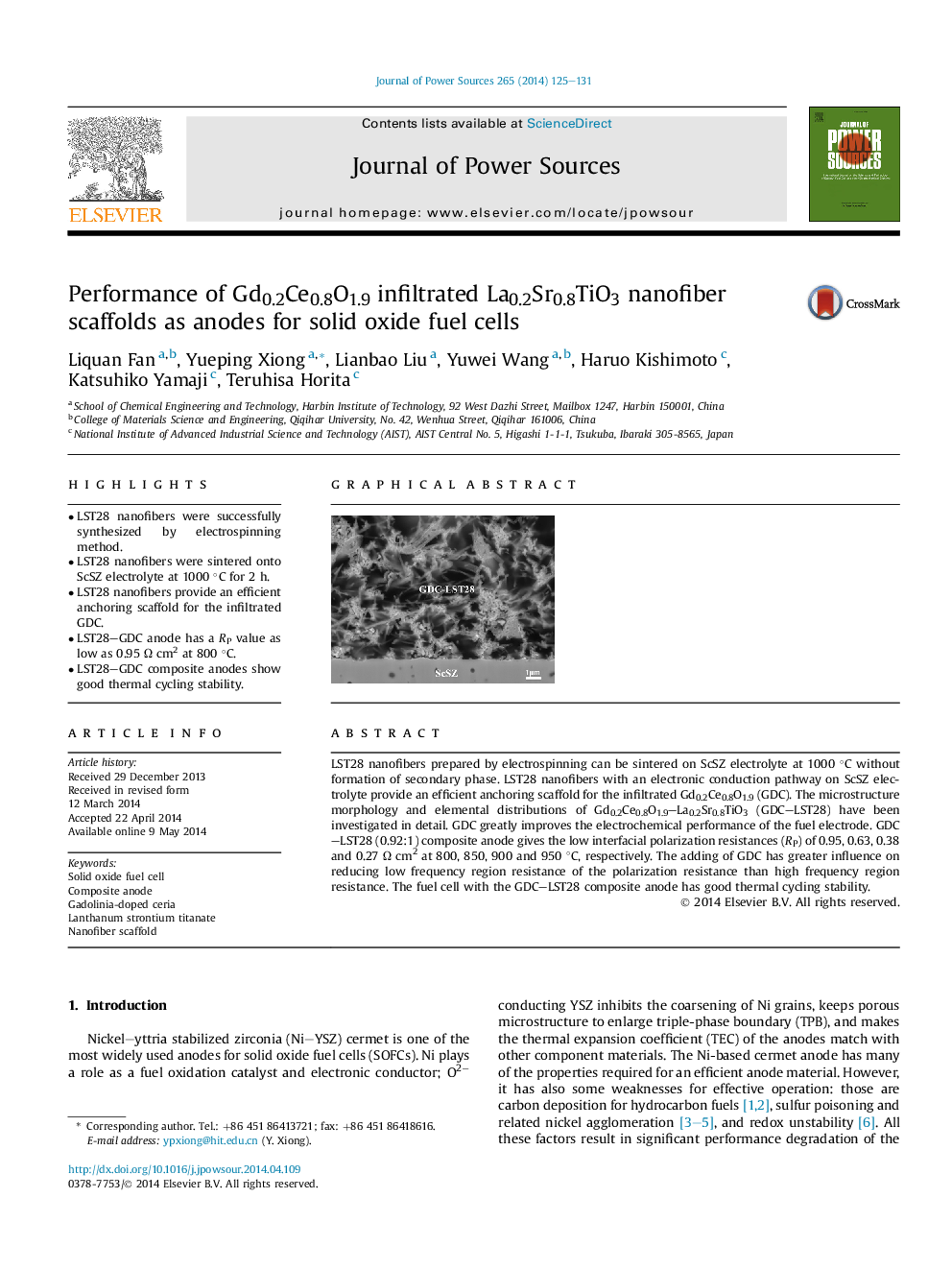| Article ID | Journal | Published Year | Pages | File Type |
|---|---|---|---|---|
| 1284034 | Journal of Power Sources | 2014 | 7 Pages |
•LST28 nanofibers were successfully synthesized by electrospinning method.•LST28 nanofibers were sintered onto ScSZ electrolyte at 1000 °C for 2 h.•LST28 nanofibers provide an efficient anchoring scaffold for the infiltrated GDC.•LST28–GDC anode has a RP value as low as 0.95 Ω cm2 at 800 °C.•LST28–GDC composite anodes show good thermal cycling stability.
LST28 nanofibers prepared by electrospinning can be sintered on ScSZ electrolyte at 1000 °C without formation of secondary phase. LST28 nanofibers with an electronic conduction pathway on ScSZ electrolyte provide an efficient anchoring scaffold for the infiltrated Gd0.2Ce0.8O1.9 (GDC). The microstructure morphology and elemental distributions of Gd0.2Ce0.8O1.9–La0.2Sr0.8TiO3 (GDC–LST28) have been investigated in detail. GDC greatly improves the electrochemical performance of the fuel electrode. GDC–LST28 (0.92:1) composite anode gives the low interfacial polarization resistances (RP) of 0.95, 0.63, 0.38 and 0.27 Ω cm2 at 800, 850, 900 and 950 °C, respectively. The adding of GDC has greater influence on reducing low frequency region resistance of the polarization resistance than high frequency region resistance. The fuel cell with the GDC–LST28 composite anode has good thermal cycling stability.
Graphical abstractFigure optionsDownload full-size imageDownload as PowerPoint slide
